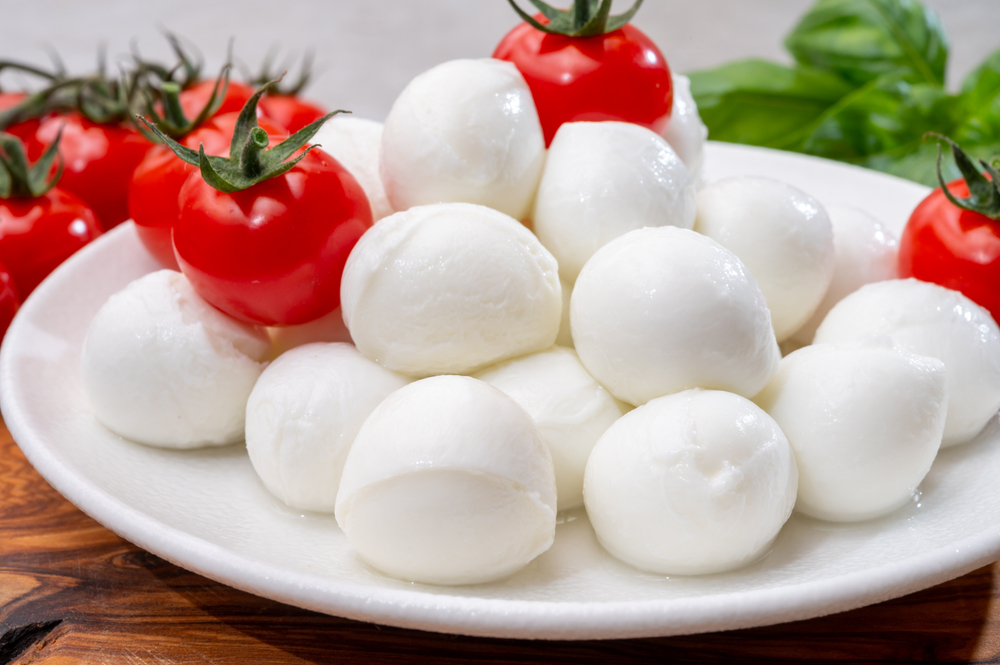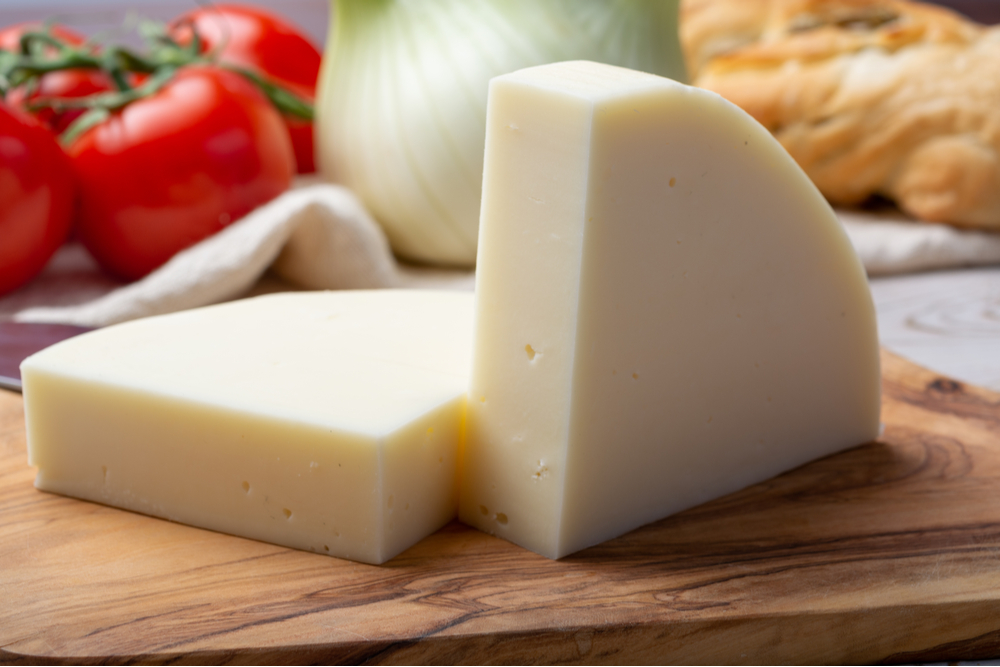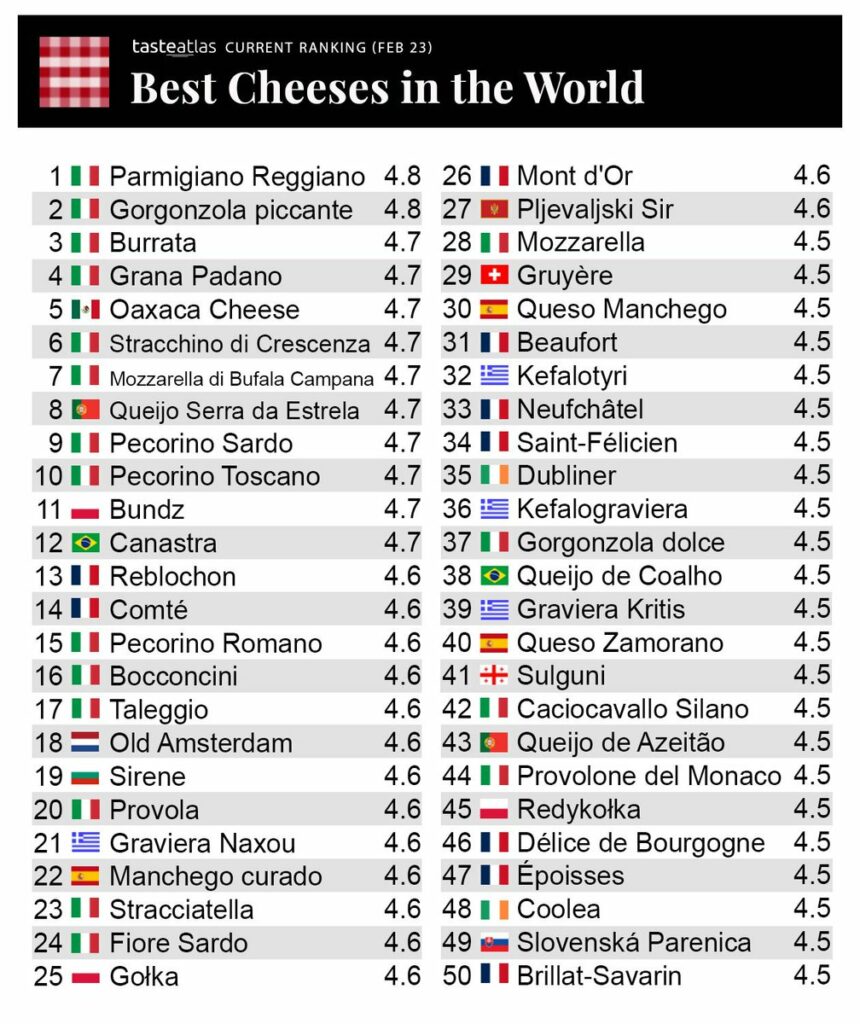Cheese in Italy is like whiskey in Scotland and champagne in France; it is a form of goods that is protected under government ruling. Therefore selecting the best Italian cheeses is no easy task.
Most cheese in Italy has a protected designation of origin which is what the P.D.O. is on your Parmesan rind. 52 different cheeses are protected under European law – so cheese is serious business in Italy.
Italy has an estimated 2500+ different varieties of cheese for different tasting and cooking purposes. Italy is also the third largest cheese producer in the EU, behind France and Germany.
Recently, a website called “Taste Atlas” posted a list of the 100 Best Cheeses in the World. Not surprisingly, Italian cheeses dominated the list, claiming 8 out of the top 10 spots. Needless to say, this was not without controversy, as some French people were unhappy about the results.
I spoke to Robert Campana from “Stop Italian Sounding” about this list and its accompanying controversy on my podcast. Have a listen and let us know what you think about the best Italian cheeses and their place on the world stage.
You can read more about this debate on his website, including a great article about a popular cheese that dates back to the Roman Empire which is still enjoyed today.
Subscribe to listen to your favorite episodes!
Say Cheese in Italian
So how do you say cheese in Italian? Well, that depends on the century. The modern word is formaggio, which comes from the vulgar dialect of Greek origin meaning “shape,” or forma in Italian. In other words, as the liquid ingredients solidify, they take on the shape of the container that they’re in.
However, another word could be casei, which is from Latin and more closely resembles the Italian word cacio, which also means cheese. In fact, “dairy products” are referred to as prodotti caseari. One of the most famous Roman pasta dishes today is called “cacio e pepe,” or cheese and pepper. And below, you can read about a cheese called caciocavallo, which comes from the same root word.
Hard Italian Cheese vs. Soft Italian Cheese
Broadly, you can separate Italian cheeses into hard cheese and soft cheese. Or in Italian, it would be more proper to say aged cheese (stagionato) versus fresh cheese (fresco). Obviously, aged cheese can keep for a long time, preferably refrigerated, but not necessarily. On the other hand, fresh cheese should be consumed within a few days after buying.
You can read more examples below, but two of the most common would be Parmigiano Reggiano as an aged Italian cheese, and mozzarella as a fresh cheese.
OK, let’s get into some specifics!
Parmigiano Reggiano
Parmigiano Reggiano, or what we in America would call “Parmesan cheese” is one of the best and most sought after and widely used cheeses across the world, let alone in Italy. Parmesan forms the base of many dishes we love in America such as Fettuccine and Carbonara to name but a few.
Parmesan is an aged hard cheese which gives it some of it’s funky flavor, which is sourced from the aging process. Unfortunately for vegetarians, parmesan often has rennet in it, which is an enzyme found in a calf’s stomach.
Parmesan is protected under law, and you cannot legally call a cheese “Parmigiano Reggiano” unless it has been judged to have been made under certain circumstances with specific local ingredients.
This is why the gross stuff you get in a plastic container has to refer to itself as “Hard Italian Cheese.” This is the case with many Italian cheeses but occurs the most with parmesan.
Pecorino Romano
Pecorino Romano is another hard Italian cheese that is used in a number of dishes and can often be substituted where parmesan is used. It is one of the best Italian cheeses, for sure. Many people find that pecorino is a great alternative to parmesan for vegetarians, or those who don’t enjoy the aged taste of parmesan.
Pecorino is actually a sheep’s cheese, the words ‘pecorino romano’ actually means sheep’s cheese of Rome. It is the sheep’s milk that gives pecorino its unique sharpness and from being aged a little less than parmesan.
Grana Padano
Grana Padano is very similar to parmesan, as it is made with similar processes, but is a lot more open in terms of legal requirements. Grana Padano cheese is inexpensive due to its leeser legal requirements.
Grana Padano tastes pretty similar to parmesan but isn’t aged for nearly as long. Grana Padano tastes a lot more nutty and subtler than parmesan, but doesn’t have the funkiness which throws some off parmesan.
‘Grana’ means grainy in Italian, and describes the texture of the cheese which is generally more crumbly than its hard cheese brothers.
Caprino (Goats Cheese)
This is another Italian classic. Caprino is a goat’s cheese made from skimmed goat’s milk. ‘Capra’ refers to the Italian word for goat, which is the animal the cheese is sourced from. There are two different styles of caprino cheese. Either fresh (fresco) or aged (stagionato).
Fresh Caprino is often soft and creamy and is shaped into a cylinder like other regional soft goats cheese. Aged Caprino is often 20-40 days old, depending on the region. The aging process adds saltier and tangier flavor to the goat’s cheese.
Asiago
Asiago is an Italian cow’s milk cheese. It’s taste is actually similar to Parmesan, as it is often aged, but the aging process can add a different texture to the cheese depending on how long it has been aged for.
Fresh Asiago can be softer and creaier in texture with a milder flavor while aged Asiago is sharper in flavor and can be harder and more grateable
Fontina
Fontina is a cow’s milk cheese made at the feet of the Alps in the Aosta valley. Typically made from unpasturised milk, the texture is semi hard and has holes or eyes in the cheese’s body.
It is quite a rich cheese that could be considered similar to the French gruyere cheese. It is often aged at a low temperature which gives it its rich and salty flavor. Fontina is the cheese of choice in an Italian fondue.
Mozzarella

Mozzarella has to be one of the most famous cheeses in any country. Mozzarella is the cheese of choice for the world’s favorite food: Pizza. Mozzarella cheese is gooey and very melty which makes it perfect for pizzas.
Even when fresh and eaten cold, mozzarella is great and can have a decent bite when in this texture.
Mozzarella is often made with cow or buffalo milk, but can be made from sheep and goat milk as well, within other regions. It is often made in the South of Italy in Calabria, although it is made across the country in many different formats.
Burrata
Burrata is a specialty cheese made commonly in Apulia. It is often an outer casing made of solid mozzarella which encases a centre that is made from stracciatella and cream.
The gooey inside makes it perfect for dipping into bread, this cheese has become favored among many high class dining establishments across the west.
Burrata isn’t a great choice for vegetarians as it often contains rennet. In November 2016, due to the cheese’s recent popularity, Burrata Di Andria became a PGI or protected geographical indication product.
Gorgonzola
Gorgonzola is a veined blue cheese common in Italy, made from unskimmed cow’s milk. For centuries this cheese was produced originally in a town of Milan called Gorgonzola. It is aged for 3-4 months which endows the cheese with its blue veins.
Depending on the age of the cheese and the aging process, gorgonzola can be creamy, salty and has the expected blue veins. Today, gorgonzola is often produced around the world including in the US where it is a favored pizza topping in Italian-American restaurants
Mascarpone
Mascarpone is a soft Italian cow’s cheese that is set with acid. Mascarpone is often pretty soft and can emulate what we would recognise in the west as soft cheese or cream cheese. Mascarpone has a plethora of uses from both savoury and sweet dishes.
It’s taste is often pretty neutral and is great to use in lasagna and ziti. Created in the Lombardy region, the process for making Mascarpone is unique but also achievable at home.
Ricotta
Ricotta is an Italian whey cheese made from a variety of milk such as sheep, cow, goat, or buffalo. Like many whey cheeses across the globe it is made from coagulated proteins that remain from the cheese making process, ricotta literally means ‘recooked’ or ‘refined’.
Ricotta is relatively similar to mascarpone but a little more grainy and potentially watery than its Lomardian brother.
Ricotta can usually be relatively sweet on its own, and thus is used in quite a few dessert dishes as well as other savoury uses. The variety of milk can add different textures to the ricotta cheese.
Provolone

Provolone is an Italian cheese that has become a family favorite within the United States in American-Italian delis across the states.
Provolone is an aged and stretched Italian cheese, made with a similar method to mozzarella. It is often made from cow’s milk, pasteurized depending on the breed of cow, and aged for at least four months.
While provolone is produced across the world, although originating in Italy, it can often be recognised with two different flavours. Provolone piccante is aged for a minimum of four months and has a sharp and funky taste from this aging process.
Provolone dolce is generally a little sweeter, nuttier, and mild. Different animal enzymes are used to produce different flavors.
Taleggio
Taleggio cheese is a specialty Italian cheese made in the titular Val Taleggio at the foot of the Alps. This is a traditional cheese that has been around in Italy for millenia and is even mentioned in the writings of Pliny the Elder, Cato the Elder, and Cicero.
The cheese is traditionally made every autumn and winter, it is a semi soft cheese made with cow’s milk. It has a thin rind and a strong aroma but is generally mild with a surprisingly fruit note to it.
Toma
Toma is another semi hard cow’s cheese from the Aosta Valley. The name ‘Toma’ refers to the process of cheese making itself and translates literally into ‘cheese made by farmer’.Similar to a French gruyere the cheese has some great melting qualities but can also be enjoyed fried like halloumi.
The cheese is generally buttery and tangy with a sort of grassy aroma and creamy texture.
Caciocavallo
Funnily enough, caciocavallo literally means ‘horse’s cheese’, but don’t worry, mare milk was not used in this cheese. Rather, the horse reference is referring to the way the cheese is tied with rope and hung, or ‘saddled’.
This is a typical and popular Italian cheese that is made in the Apennine Mountains. It is a hard cheese with an edible rind that is similar in taste to provolone and is usually made from cow or sheep’s milk.
Columella in his historical treatise on agriculture ‘De re rustica’ (35-45 CE) lists the full recipe for the cheese, making it one of most historical cheeses in the world.
Bel Paese
Bel Paese, which means ‘beautiful country’ is a semi soft Italian cheese. It was originally created by Egidio Galbani, yes that Galbani you may recognise from the supermarket shelf, who wanted a mild soft cheese to sell in Italy.
Usually matured for 6-8 weeks, the cheese has a mild and buttery flavor which has made it perfect for eating with wines and other fruits.
Stracchino
Stracchino, sometimes called crescenza, is an Italian cheese local to Lombardy. It’s name alludes to its strange history and making process which has never been verified. ‘Strach’ means ‘tired’ in the Lombard dialect, and refers to the tired cows they make the cheese from.
Apparently it is these tired cows, fatigued from coming down from the heights of the Alps, that give the cheese its flavor.
The cheese is generally eaten very young and has no rind. It’s very soft and has a creamy texture that is quite mild. Usually eaten on its own, Stracchino is also used quite a lot as a filling bread such as focaccia.
Bruss
Bruss, or Brös, is a cheese that is local to Piedmont and Liguria. It is made with fermented sheep’s cheese. It is a very strong fermented cheese that gets its strong taste from the addition of ‘grappa’ which ferments the cheese.
‘Grappa’ is sort of a cheap peasant wine drunk in this region of Italy. The strong taste of Bruss birthed the Italian proverb ‘Only love is stronger than Bruss.’
Bruss is usually enjoyed smeared on bread and is quite spreadable.
Casizolu
Casizolu is an interesting cheese that is rarely enjoyed outside of Sardinia. In the past it was made by women who made the cheese with the same method as mozzarella. The cheese is made from cow’s milk and is usually aged for a period.
If aged for over 2-3 months the cheese can have a certain grassy and buttery taste and some unique nutty finish. The most likely reason it has fallen out of favor is due to it requiring the specific milk of free range grass fed cows making it available only in late fall through early summer.
Ragusano
Ragusano cheese is made in the Ragusa region of Sicily. This Sicilian cheese is a firm stretched cheese, made the same way as mozzarella, but from the whole milk of Modicana bred cows raised exclusively on fresh local grass.
The specific and local methodology to make the cheese makes it quite the specialty to get outside Italy.
The cheese is usually made into a block and can have a sweet and nutty taste. When aged for over 6 months it gets a bit funkier and becomes better for grating on salads and pasta.
Best Italian Cheeses – Summary
What are the best Italian cheeses? Well, as you’ve read in this article, it all depends on what part of Italy you’re from and what the cheese will be used for. In any case, it safe to say that at any given moment, the best Italian cheeses are the ones on the plate in front of you! Mangia, mangia!

